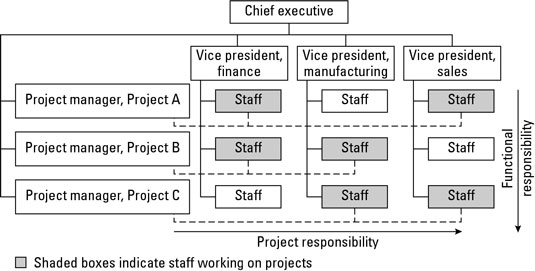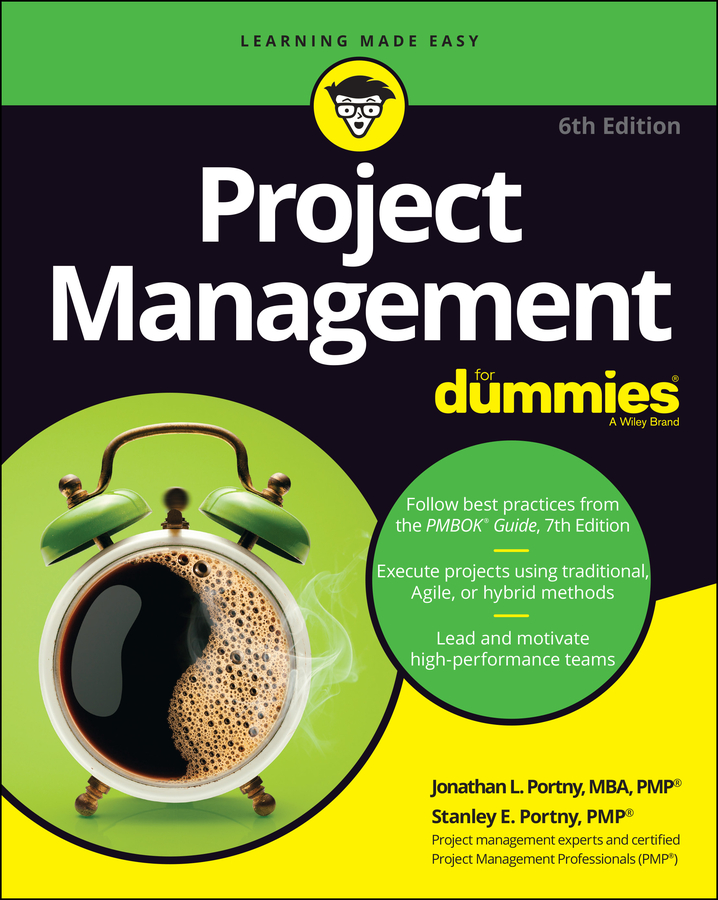Many project managers have adopted a matrix organization structure that combines elements of both the functional and projectized structures to facilitate the responsive and effective participation of people from different parts of the organization on projects that need their specialized expertise.
In a matrix organization structure, people from different areas of the organization are assigned to lead or work on projects. Project managers guide the performance of project activities while people’s direct supervisors (from groups such as finance, manufacturing, and sales) perform administrative tasks like formally appraising people’s performance and approving promotions, salary increases, or requests for leave.

A matrix environment is classified as weak, strong, or balanced, depending on the amount of authority the project managers have over their teams:
-
Weak matrix: Project team members receive most of their direction from their functional managers. Project managers have little, if any, direct authority over team members and actually function more like project coordinators than managers.
-
Strong matrix: Companies with strong matrix structures choose project managers for new projects from a pool of people whose only job is to manage projects. The companies never ask these people to serve as team members. Often these project managers form a single organizational unit that reports to a manager of project managers. In addition to directing and guiding project work, these project managers have certain administrative authority over the team members, such as the right to participate in their performance appraisals.
-
Balanced matrix: This type of matrix environment is a blend of the weak and strong environments. People are assigned to lead projects or serve as team members based on the projects’ needs rather than on their job descriptions. Although the project manager may have some administrative authority over team members, for the most part, the project manager guides, coordinates, and facilitates the project.
A matrix environment offers the following benefits:
-
Teams can assemble rapidly: Because you have a larger resource pool from which to choose your project team, you don’t have to wait for a few people to finish current assignments before they can start on your project.
-
Specialized expertise can be available for several different projects: Projects often require a small amount of effort from a person with highly specialized knowledge or skills.
-
Getting buy in from team members’ functional units is easier with the matrix structure than with the functional or projectized structures: Unit members who work on a project or who are affected by its outcome are more likely to support the project if they’re confident that the team hears their concerns and issues.
A matrix environment introduces the following challenges, which the project manager must successfully address:
-
Team members working on multiple projects respond to two or more managers. Each team member has at least two people giving her direction — a project manager and a functional manager. When these two managers are at similar levels in the organization, resolving conflicting demands for the team member’s time can be difficult.
-
Team members may not be familiar with one another’s styles and knowledge: Team members may require some time to become comfortable with one another’s work styles and behaviors.
-
Team members may focus more on their individual assignments and less on the project and its goals: For example, a procurement specialist may be responsible for buying equipment and supplies for all her projects. In such a case, the specialist may be less concerned about a project’s target date for the purchases and more concerned about correctly following her department’s procurement procedures.

